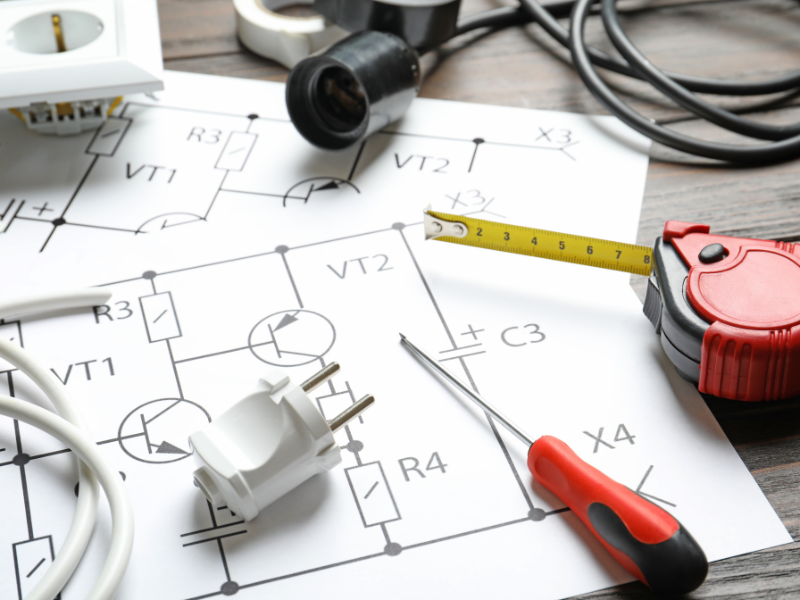Electrical Permit Philippines: What You Need to Know

Planning to install or upgrade electrical systems? Before you plug in and power up, there’s one crucial step you can’t skip — securing an electrical permit in the Philippines.
Under the Philippine Electrical Code (PEC), all electrical works — big or small — require a permit before they begin. This process ensures that installations follow safety and performance standards designed to protect lives, property, and entire communities.
Why Electrical Permits Matter
Electrical permits aren’t just paperwork. They’re proof that your project is safe, compliant, and professionally designed.

An approved permit means:
- Your electrical system meets the Philippine Electrical Code (PEC).
- Licensed professionals reviewed and verified your plans.
- You’re legally protected from penalties, delays, or safety risks.
Skipping this step can lead to serious issues — from fines and disconnections to electrical fires or accidents. Simply put, permits keep both your project and your people safe.
Understanding the Legal Framework
Every electrical project in the Philippines must comply with a combination of national standards and local regulations. Here’s a quick breakdown:
Each layer ensures safety, efficiency, and accountability — from the drawing board to the final inspection.
Step-by-Step Guide: How to Get an Electrical Permit in the Philippines
Whether it’s a home renovation or a commercial project, the process usually follows these key stages:
1. Initial Assessment and Planning
Define your project’s electrical scope. Identify your expected load, materials, and layout to ensure your plans are compliant with PEC standards.
2. Filing the Application
Submit your electrical permit application to your city or municipal Building Official. Include:
- Detailed electrical plans and specifications
- Load schedules and diagrams
- Valid ID and proof of property ownership or authorization
3. Plan Review and Approval
Officials review your plans for compliance with the Philippine Electrical Code and other safety standards. Once approved, your electrical permit will be issued.
4. Avoid Common Mistakes
Avoid delays by ensuring your application is:
- Complete and accurate
- Compliant with PEC standards
- Supported by all required documents
Requirements and Fees for Electrical Permits in the Philippines
Permit fees and requirements can vary per LGU, but most offices require the following:
Document Checklist
- Electrical plans & technical specifications
- Load computations and single-line diagrams
- Proof of ownership or authorization
- Valid ID of the applicant
Fee Structure
The cost of an electrical permit in the Philippines depends on project size and complexity. Additional costs may include:
- Plan review and inspection fees
- Revision fees for noncompliant plans
Payment options often include LGU cashier, online banking, or e-payment platforms. Always secure an official receipt for tracking.
Inspection and Compliance Process
Once your permit is approved, inspections will verify that your project meets national safety standards.
- Pre-Installation Inspection
Inspectors check if materials and site setups comply with the Philippine Electrical Code before starting work.
- Final Inspection
After installation, inspectors ensure all connections and systems are properly grounded and installed according to approved plans.
- Certificate of Electrical Inspection (CEI)
After passing the final inspection, you’ll receive a CEI — the official proof that your electrical installation is compliant and ready for power connection.
- Meralco Connection Requirements
Electrical Safety and Compliance in the Philippines
Securing an electrical permit in the Philippines is more than a legal requirement — it’s a commitment to safe, efficient, and compliant design.
By following the Philippine Electrical Code, completing all inspections, and obtaining your Certificate of Electrical Inspection, you ensure that your project runs safely and efficiently.
At Pencil Design Studio, we handle every detail of the electrical permit process when you hire us as your house contractor, so you can focus on dreaming about your new home, not the paperwork.
Stay compliant. Stay safe.
Ready to build your dream home? Book a consultation with us today.
More Great Resources For You
More Great Resources For You
Let’s build your dream home now, shall we?
We guarantee you that we won’t rest until your dream home has come to life.





